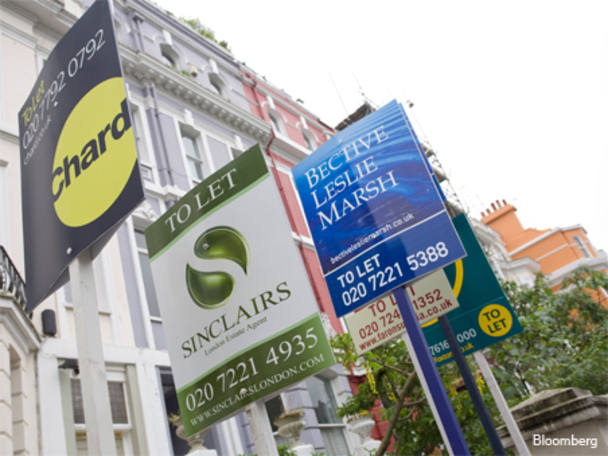A buoyant lettings market is partly responsible for the resurgence of the buy-to-let sector since the credit crunch. Yet so, too, is a surprisingly attractive mortgage market. Lending rates continue to fall and now stand at 4.8 per cent on average, according to data provider Moneyfacts.co.uk.
For that, borrowers can mainly thank Sir Mervyn King, whose quantitative easing programme has depressed gilt yields to record lows. But rising competition between lenders, who see professional landlords as a safer bet than first-time buyers, has probably helped too. There are now 486 buy-to-let products on the market - up from 386 a year ago (although still a very far cry from the 3,662 products recorded in Aug 2007).
As rental yields rise and borrowing rates fall, a profitable carry trade is emerging. Say you borrow £100,000 from the bank at around 5 per cent, buy a house for £150,000 and then rent it out at a 6 per cent yield. You'd receive £9,000 of income each year, or £4,000 net of finance costs - equivalent to an 8 per cent return on your £50,000 cash investment. Granted, some of that will be absorbed by management fees, repair works and possibly voids in the tenancy. But unless it's a very bad investment, there should be a decent cash return - these numbers are conservatively pitched.
This arbitrage – and perhaps also the more debatable assumption that houses prices are low – has prompted a rebound in interest in housing investments after the ravages of the credit crisis. Quarterly buy-to-let mortgage approvals peaked at 93,100 in the third quarter of 2007 before plunging to just 21,900 in the first quarter of 2009. Yet volumes started to pick up again last year, hitting 34,500 in the three months to September (the latest available figures).
John Heron at Paragon, a specialist buy-to-let lender, says most of the growth is due to established landlords expanding their portfolios, although he also reports some newcomers to the market. According to a survey carried out by the Association of Residential Lettings Agents (Arla), a full quarter of landlords bought properties last year, whereas only 8 per cent were sellers.
Buy-to-let lending may not hit its previous peak for many years, but the current modest recovery should continue as long as the carry trade between debt and rent remains attractive. Rental growth is now slowing but remains at 4-5 per cent nationally, underpinned by a large population of would-be first-time buyers who have neither the confidence nor the deposits necessary to buy. With house prices at best flat, yields are rising.
Debt is the more volatile element of the arbitrage. The standard product these days is the two-year mortgage, roughly equally split between variable and fixed rate deals, says Mr Heron. Landlords therefore face huge interest-rate risk, which they have been trying to manage either by paying down debt or not taking on too much in the first place; the average loan-to-value ratio is now only 46 per cent, according to Arla.
Yet with the US Federal Reserve promising to keep its benchmark interest rate at zero until the end of 2013 at the very earliest, that risk remains remote for now. Unless a messy outcome to the eurozone crisis sparks a second house price crash - still a pretty unlikely scenario - landlords face a discreetly profitable few years.
Best buy-to-let deals
Fixed rate:
| Lender | Rate and term | Max LTV | Fee |
|---|---|---|---|
| Mansfield BS | 3.89% for 2 years | 70% | £999 |
| Nottingham BS | 4.49% to 1/2/15 | 75% | £1,299 |
| Leeds BS | 4.99% to 28/2/17 | 70% | £999 |
Variable rate:
| Lender | Rate and term | Max LTV | Fee |
|---|---|---|---|
| Nottingham BS | 3.29% variable for 2 years | 60% | £1,299 |
| Mansfield BS | 3.75% variable for 2 years | 70% | £799 |
| Bank of China | 3.88% variable for term | 75% | min £1895 |
Source: Moneyfacts.co.uk











